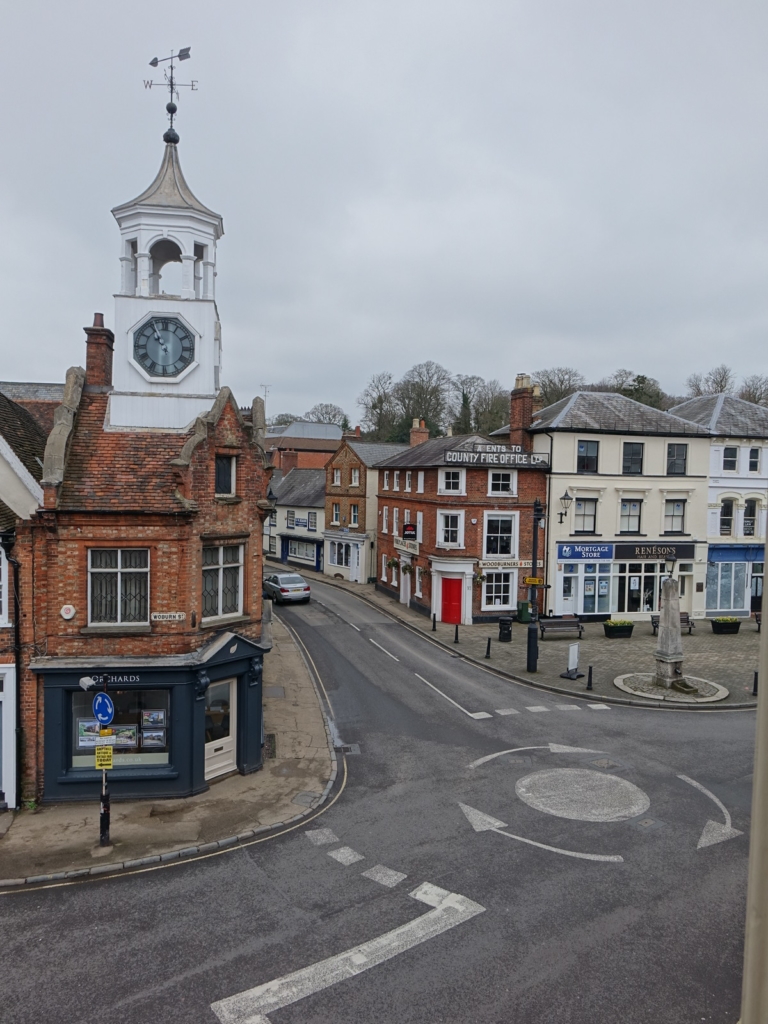 Staying at the historic White Hart in Ampthill, once one of England’s 18th century coaching inns, made me feel like I slipped back in time to the Wild West days à la European.
Staying at the historic White Hart in Ampthill, once one of England’s 18th century coaching inns, made me feel like I slipped back in time to the Wild West days à la European.
Before train systems developed, coaching inns served as a key part of the travel infrastructure in Europe. On overnight stops, stagecoaches stopped there to “refuel.” Weary travelers rested and ate and drank at the pub, while their horses were fed and watered in the stables.
 On the square across from the clock tower, the Queen Anne style White Hart, built on a Tudor foundation, remains the soul of the Georgian market town dating back to the 11th century. The hotel’s name, Hart, a term for stag used in medieval times, represented the most prestigious form of hunting. Royalty from London tracked these animals in the woods around Ampthill, a day’s carriage ride from the city.
On the square across from the clock tower, the Queen Anne style White Hart, built on a Tudor foundation, remains the soul of the Georgian market town dating back to the 11th century. The hotel’s name, Hart, a term for stag used in medieval times, represented the most prestigious form of hunting. Royalty from London tracked these animals in the woods around Ampthill, a day’s carriage ride from the city.
 The hotel, which over time withstood raids, conflicts and fires, has been restored in the style of an old coaching inn. The front door opens to the bar where cozy tables fill nooks like in a traditional pub, while the back rooms serve as dining areas. The former stables, now a dining hall, accommodate groups for banquets and receptions.
The hotel, which over time withstood raids, conflicts and fires, has been restored in the style of an old coaching inn. The front door opens to the bar where cozy tables fill nooks like in a traditional pub, while the back rooms serve as dining areas. The former stables, now a dining hall, accommodate groups for banquets and receptions.
On the three floors above the bar, 8 refurbished rooms host overnight guests in modern comfort. To add to the charm each guest room bears a name representing someone from every century from the 16th to 20th.
Room No 3, the New York Chamber, honors Ampthill’s famous son Richard Nicolls, who was appointed by Charles II to reclaim Dutch settlements in North America for England. When New Amsterdam surrendered, Nicoll renamed the city and state New York in honor of the King’s brother, James Duke of York.
 We stayed in room 7, the Inner Chamber, where wood beams added old world charm and the floor, which slanted toward the hallway, gave authenticity. I felt like I was on a ship as I stumbled to the bathroom in the middle of the night.
We stayed in room 7, the Inner Chamber, where wood beams added old world charm and the floor, which slanted toward the hallway, gave authenticity. I felt like I was on a ship as I stumbled to the bathroom in the middle of the night.
In the breakfast room, served in the Great Oak Parlor, once the former kitchen, you could savor a hearty English breakfast off the menu including the Full Monty.
No matter what time of day or night I walked downstairs to the ground floor, the place buzzed. Locals and visitors enjoyed their morning coffee, afternoon tea, an evening meal and favorite ales, which were once brewed on site. On a Saturday night, I could barely squeeze through the crowd at the bar to return to my room.
Being a guest at the White Hart Inn made me feel like I was living in another century. Stepping outside each morning, I almost expected to see a horse and buggy waiting on the square to squire me around the lovely English countryside.















